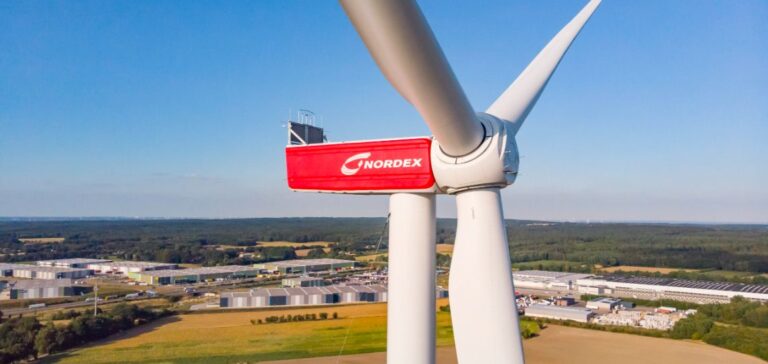German group Nordex announced that it has received an order from a wind project developer to supply and install 16 N163/5.X turbines in Nova Scotia, Canada. The total capacity of the project is 94 megawatts (MW). This contract also includes a 25-year maintenance agreement.
The turbines, each with a nominal power output of 5.9 MW, will be delivered starting mid-2026. They will be installed on 125-meter-high tubular steel towers and equipped with Nordex’s advanced anti-icing system for rotor blades. This technology is designed to minimize downtime related to ice formation, a key challenge for energy production in cold climates.
Nordex’s expansion in Canada
The Canadian market represents a strategic area for Nordex, which is gradually expanding its presence there. The company is relying on its expertise in designing turbines suited to winter conditions to strengthen its position.
According to Manav Sharma, CEO of the North America division of Nordex, the integration of an anti-icing system into their turbines 15 years ago is a key factor in their adaptation to cold climates. This feature helps reduce operational interruptions due to ice and ensures more stable energy performance.
Technology suited to extreme conditions
Adapting wind infrastructure to harsh climates is a crucial factor for its economic and operational viability. In Nova Scotia, where winters can be marked by prolonged sub-zero temperatures and unpredictable weather conditions, anti-icing technologies have become a key criterion in the selection of equipment.
The contract secured by Nordex is part of a broader strategy to optimize the performance of wind farms in North America. The combination of high-capacity turbines and specific solutions for cold climates improves the profitability of projects by minimizing production losses.
Nordex’s positioning in the wind energy market
With approximately 57 gigawatts (GW) of installed capacity in more than 40 markets, Nordex is one of the key players in the land-based wind equipment sector. Its product portfolio includes turbines ranging from 4 to over 6 MW, designed to meet the requirements of markets with limited space or network capacities.
In 2024, Nordex reported consolidated revenue of approximately €7.3 billion and employed over 10,400 people. Its industrial network spans several production sites located in Germany, Spain, Brazil, India, the United States, and Mexico.






















